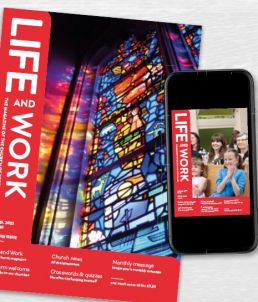
Friday February 28
IN 1546 a new edition of the Bible was printed by James Giunta in Lyon; it was, of course, the Latin Translation known as the Vulgate. The printing was handsomely done in two columns with ornamental capitals and, here and there, curious woodcuts. Printed on more than six hundred pages of thick paper, it made a heavy folio volume.
Such books were expensive and Giunta had to wait some years before he could dispose of all his copies. Some were still in his hands in 1554 when a wandering Scottish priest visited the printing house. John Jackson was a St. Andrews man by birth and also a graduate of her University. He was already elderly when he walked out of the musty printing shop of Giunta, carrying under his arm the heavy Vulgate which he had newly purchased.
He did not live long to read it after he returned to St. Andrews, and his new Bible became the property of John Sinclair, Dean of the Collegiate Church of Restalrig outside Edinburgh. The Reformers had once hoped for his support but in 1558 he made his decision. Preaching in Restalrig, he denounced the Reformation root and branch. Before then, Knox tells us many had supposed “that he was not far from the Kingdom of God” but thenceforward the Reformers viewed him with a peculiar bitterness. “He was,” writes Knox elsewhere, “blynd of ane eie in the body, but of boithe in his saule.”
But Sinclair was not so regarded in all quarters; he was a scholar with artistic tastes familiar with educated circles on the Continent and frequently employed as a royal envoy and courier to the court of France. When Queen Mary was married to Darnley in Holyrood, it was John Sinclair who performed the wedding ceremony.
Sinclair considered his new volume. It was finely printed but simply bound in the temporary cover in which the printer had issued it. Scotland had no bookbinders to compare with those of France but an Edinburgh tradesman did what he could. The old covers were stripped off; a leaf was torn from a large vellum missal, bright with the red and black music written for church use centuries before, and was used to give backing to the volume; stout oak boards were added and the whole was covered in calfskin stamped with flowers, unicorns and griffins. The result was quite handsome and on the cover Sinclair had his initials stamped back and front, as was his custom with all his books.
On 7th September, 1565, he became Bishop of Brechin: it was an empty title, since the Reformation had made the episcopate in Scotland a mere shadow. He died on 9th April, 1566, in James Mosman’s house in Forrester’s Wynd in Edinburgh, the last Bishop of Brechin to hold appointment from the Pope.
We next hear of the Bible in a quarter of Scotland which suggests that it had been sold in Brechin after the Bishop’s death. James Barclay, its new owner, was also a St. Andrews graduate. In 1597 he became minister of Ruthven, until in 1608 he was called to Meigle. He died in 1627 and his Bible, across the title page of which he had written his name, became the property of his son James. But James was no scholar, and so in 1629 he sold his father’s old Latin Bible to John Duncanson, newly appointed to be minister of the second charge of Dundee. He ministered there until he died in the Autumn of 1651.
And where did the Bible go then? We cannot tell, but it survived the years, and in 1941 it lay in a second-hand bookshop in Parliamentary Road in Glasgow. There the present writer found it and purchased it for the sum of 4s. 6d. One hinge is broken and part of the leather cover has gone, exposing the hard old oak and the sheet of vellum manuscript used when it was rebound for John Sinclair so many years ago. Its message has not changed with the years. The owners of the book have long since passed away, but the Word of the Lord endureth forever.
Do you know where the Bible is now? Please email us.
Website by Adept